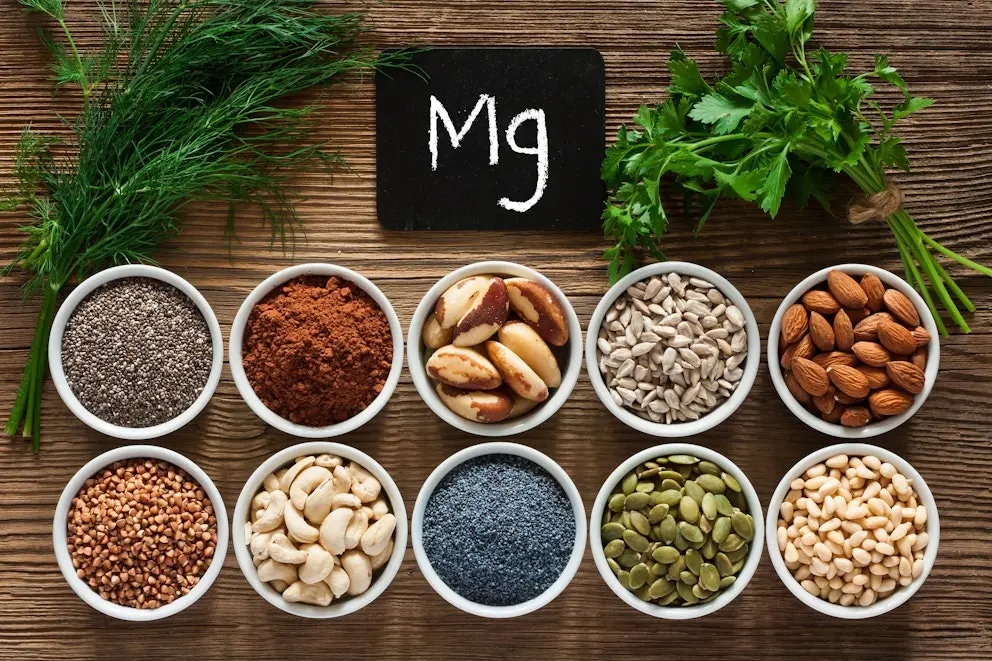Magnesium is an essential mineral vital for bone health, muscle function, and healthy blood sugar control.
Maintaining adequate magnesium levels through nutritious whole foods can help maintain healthy blood pressure regulation and promote cardiovascular wellness.
Discover what food is highest in magnesium and learn how to maintain optimal levels of this essential mineral.
What is magnesium?
Magnesium is essential for more than 600 cellular and metabolic pathways.
It’s a critical component of many enzymes that facilitate biochemical reactions necessary for energy production, digestion, hormone synthesis, and various other physiological processes.
“The body contains around 25 grams of magnesium, most of which is stored in bones,” explains Dr. Berg. “Only one percent of magnesium circulates in the blood, which makes it challenging to accurately diagnose magnesium deficiency with blood tests.”
While the total amount of magnesium in the body is relatively low compared to other minerals like calcium or phosphorus, it’s crucial for the proper functioning of muscles, nerves, heart muscle, and immune system.
Magnesium doesn’t stay long in the body, and consuming adequate amounts of magnesium-rich foods is essential to prevent deficiency.
Watch the video below to learn about the best magnesium-rich foods you should eat regularly.
Seven foods high in magnesium
You may have heard that whole grains such as wheat, rye, and oats are an excellent source of magnesium.
While whole grains contain magnesium, they’re also high in phytates, a type of anti-nutrient that can inhibit intestinal mineral absorption.
A study published in The American Journal of Clinical Nutrition found that phytates in food can reduce magnesium absorption by more than 60 percent.1
Luckily, there are plenty of magnesium-rich foods that are low in phytates and won’t interfere with mineral absorption.
Here are seven exceptional dietary sources of magnesium.
1. Pumpkin seeds
Pumpkin seeds contain 168 mg of magnesium per cup (120 grams), making them one of the best dietary sources of magnesium.
Sunflower and chia seeds are also high in magnesium and excellent sources of healthy fats.
2. Spinach
While a 3.5-ounce (100-gram) serving of raw spinach contains around 79 mg of magnesium, one cup (225 grams) of cooked spinach delivers as much as 150 mg of magnesium.
3. Swiss Chard
Swiss chard is another exceptional source of magnesium. 3.5 ounces (100 grams) of raw Swiss chard contains around 80 grams of magnesium.
4. Almonds
While most nuts contain magnesium, almonds are among the best keto-friendly magnesium-rich foods. A 1-ounce (28-gram) serving of almonds provides about 76 milligrams of magnesium.
5. Avocado
On average, one medium-sized avocado (200 grams) contains around 30 to 40 milligrams of magnesium.
6. Dark leafy greens
Leafy green vegetables are rich sources of chlorophyll, a magnesium-containing plant compound.
Depending on the exact type of leafy green, a 3.5-ounce serving can deliver between 30 and 75 mg of magnesium.
7. Dark chocolate
One ounce (30 grams) of dark chocolate with a cocoa content of between 70 to 80 percent contains 60 mg of magnesium.

How much magnesium do you need?
The National Institute of Health (NIH) recommends a daily magnesium intake of 420 milligrams for men and 320 milligrams for women.2
However, individual magnesium needs can vary, and athletes or people with certain medical conditions, such as Crohn’s disease, may require a higher magnesium intake to maintain sufficient levels.
Most people can increase magnesium levels by incorporating plenty of magnesium-rich foods into their diet.
However, magnesium and other essential minerals require an acidic environment for effective intestinal absorption, which leaves individuals with low stomach acid at risk of magnesium deficiency.
Increasing stomach acidity with apple cider vinegar can significantly enhance mineral absorption and boost magnesium levels.
In addition, magnesium is one of the few nutrients that can be absorbed through the skin. Transdermal magnesium contains concentrated magnesium chloride, which can be absorbed by sweat glands and hair follicles.
Transdermal magnesium won’t significantly increase circulating magnesium levels, but it can be a useful tool in managing muscle tension, cramps, and joint pains.
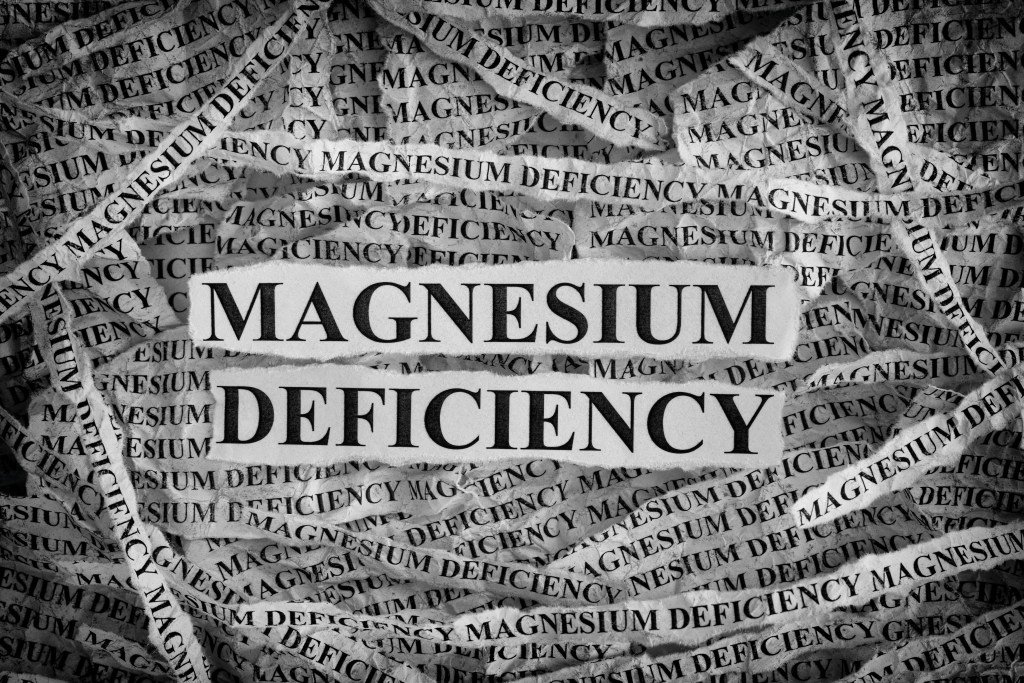
Signs of magnesium deficiency
Although magnesium-rich foods are widely available, research published in Nutrients found that almost 50 percent of the population doesn’t consume enough magnesium and is at risk of deficiency.3
Because magnesium is involved in hundreds of biochemical processes, deficiency can manifest in a wide range of symptoms.
Here are common signs of magnesium deficiency:
- Low exercise tolerance
- Tiredness
- Poor blood pressure regulation
- Sleep issues
- Memory problems
- Muscle discomfort
- Irritability
- Irregular heartbeat
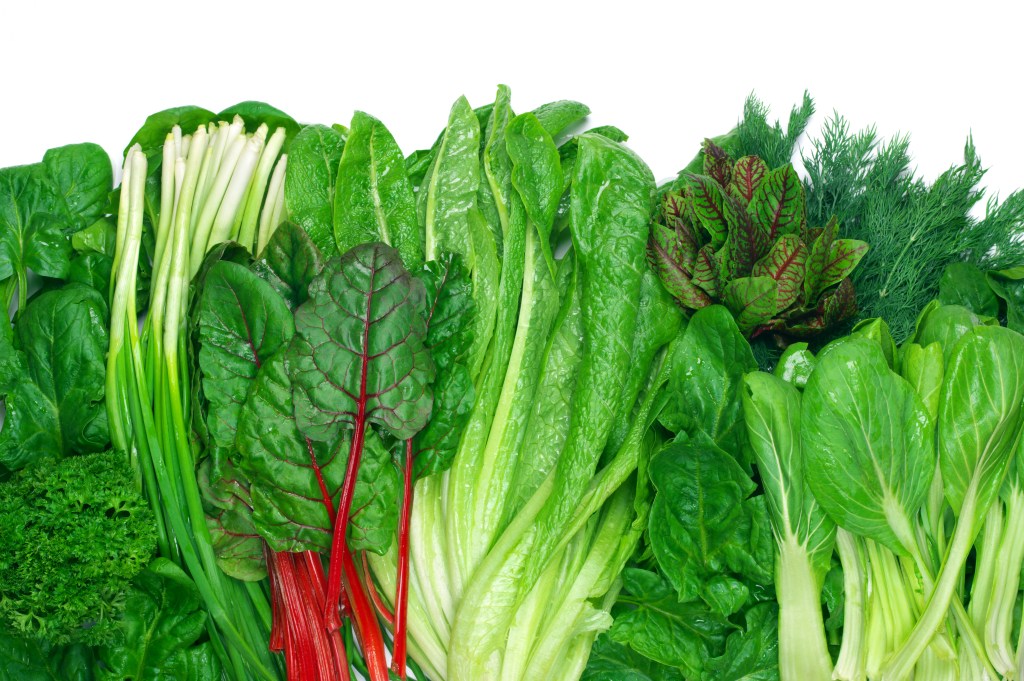
Benefits of magnesium
Magnesium is an essential cofactor in hundreds of biochemical reactions and plays a vital role in energy-making processes, digestion, neurotransmitter production, muscle function, and bone health.
A study published in Scientifica investigated the health benefits of magnesium and concluded, “Insufficient Magnesium has been linked to a spectrum of clinical afflictions, a not surprising finding considering the required role of the electrolyte in hundreds of essential biochemical reactions.”4
Here are three health benefits of magnesium.
1. Supports cardiovascular health
Adequate magnesium levels are linked to better blood pressure regulation and overall cardiovascular health.
Magnesium helps relax blood vessels, which helps lower elevated blood pressure, a primary risk factor for cardiovascular disease.
Magnesium has also been found to support normal blood coagulation, thereby supporting circulatory health and heart function.
2. Regulates nerve function
Magnesium is crucial for nerve transmission and helps maintain healthy nervous system function.
Magnesium regulates neurotransmitter production and has a calming effect on the nervous system, which may explain why consuming plenty of magnesium-rich foods may help improve symptoms of anxiety and depression.
3. Promotes healthy bones
Magnesium works with vitamin D and calcium and is essential for strong bones and skeletal health.
Magnesium is a vital component of hydroxyapatite, the main component of bone tissue, which provides the structural integrity of bones and contributes to their hardness and density.
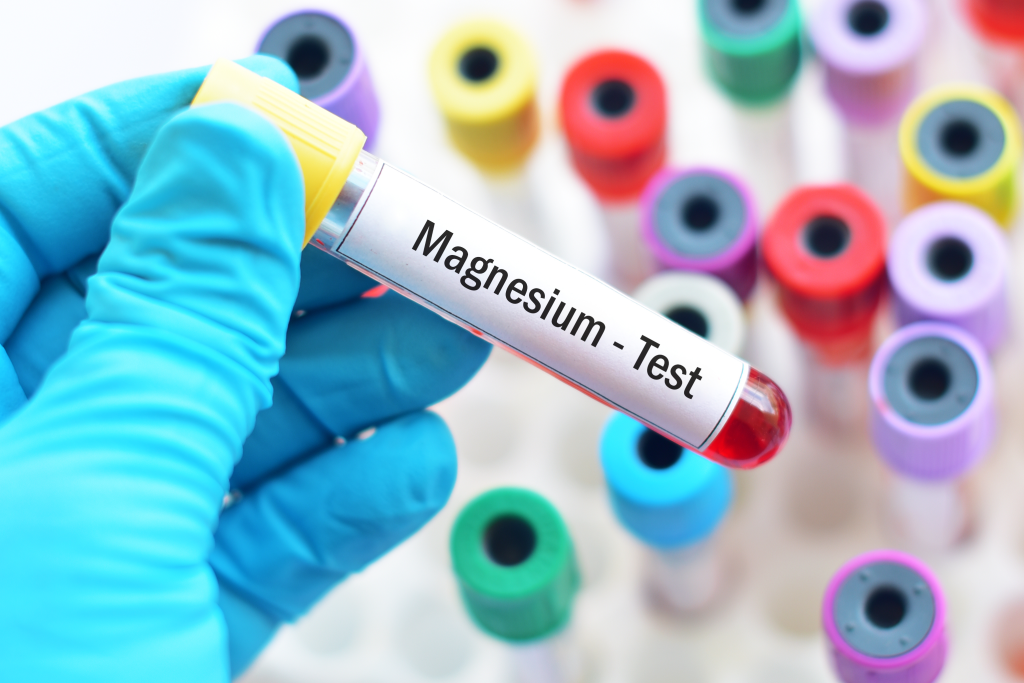
Hypermagnesemia (high magnesium) causes and symptoms
Hypermagnesemia is a rare and potentially serious condition characterized by elevated magnesium levels in the blood.
Abnormally high magnesium levels are typically linked to impaired magnesium excretion due to poor kidney function. In some cases, hypermagnesemia can be caused by excessive magnesium intake through supplements or medications such as magnesium-containing antacids or laxatives.
Here are common symptoms of hypermagnesemia:
- Weakness
- Confusion
- Dizziness
- Headache
- Constipation
- Bladder issues
- Low blood pressure
- Shallow breathing
Severe cases of hypermagnesemia can lead to coma and even cardiorespiratory arrest, and it’s crucial to seek medical attention if you experience symptoms related to elevated magnesium levels. Health professionals can evaluate blood magnesium levels and formulate an appropriate treatment plan.
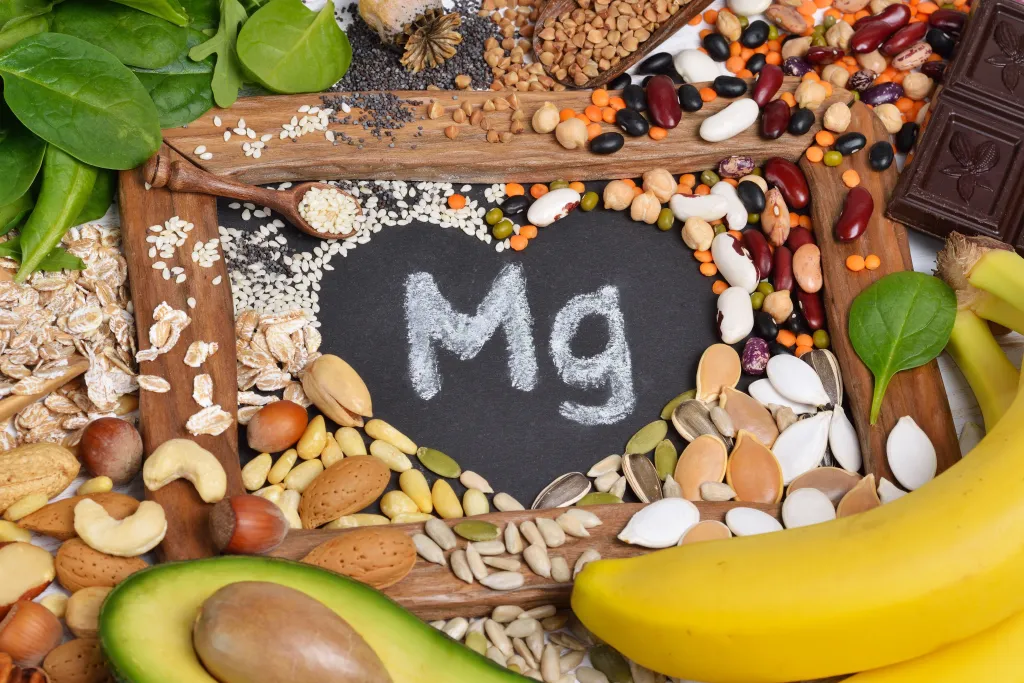
Key takeaways
Magnesium is an essential mineral crucial for health and well-being, and if you want to naturally raise magnesium levels, you may be wondering what food is highest in magnesium.
While leafy greens, almonds, avocados, and dark chocolate are magnesium-rich foods, pumpkin seeds are one of the best dietary magnesium sources, providing as much as half of your daily magnesium requirements per one cup.
FAQ
1. What food is highest in magnesium?
Pumpkin seeds are one of the top dietary sources of magnesium. A cup (120 grams) of pumpkin seeds contains 168 mg of magnesium, almost half the daily magnesium requirement for most adults.
2. What foods are rich in magnesium?
There are many magnesium-rich foods, including pumpkin seeds, chia seeds, almonds, avocados, dark chocolate, and green leafy vegetables.
3. How can I raise my magnesium levels quickly?
Consuming plenty of magnesium-rich foods can help raise and maintain magnesium levels.
4. What fruit has the most magnesium?
Dried figs and avocados–which are technically a fruit–are among the highest magnesium-containing fruits.
One cup of dried figs (150 grams) or one large avocado can contain more than 25 percent of the daily magnesium requirements for most adults.
5. What vegetable is highest in magnesium?
Spinach and other green leafy vegetables, such as Swiss chard, mustard greens, and kale, are excellent sources of magnesium.
6. What are the benefits of magnesium?
Magnesium is an essential cofactor in hundreds of biochemical reactions and plays a crucial role in energy production, digestion, muscle function, and cognition.
7. How much magnesium do I need each day?
According to the National Institute of Health (NIH), men should consume 420 mg and women 320 mg of magnesium daily.
8. What are the signs of magnesium deficiency?
Magnesium is needed for more than 600 metabolic and cellular pathways, and deficiency can manifest in a wide range of symptoms.
Common signs of magnesium deficiency include tiredness, poor blood pressure regulation, memory problems, brain fog, sleep issues, and muscle discomfort.
9. What are the signs of too much magnesium (hypermagnesemia)?
Increased blood magnesium levels are typically caused by kidney issues or excessive intake of magnesium-containing medicines such as laxatives or antacids.
Symptoms such as tiredness, confusion, headaches, bladder issues, low blood pressure, and shallow breathing can indicate hypermagnesemia and should be taken seriously.
10. Can you get too much magnesium from food?
No, it’s generally not possible to get too much magnesium from dietary sources.
